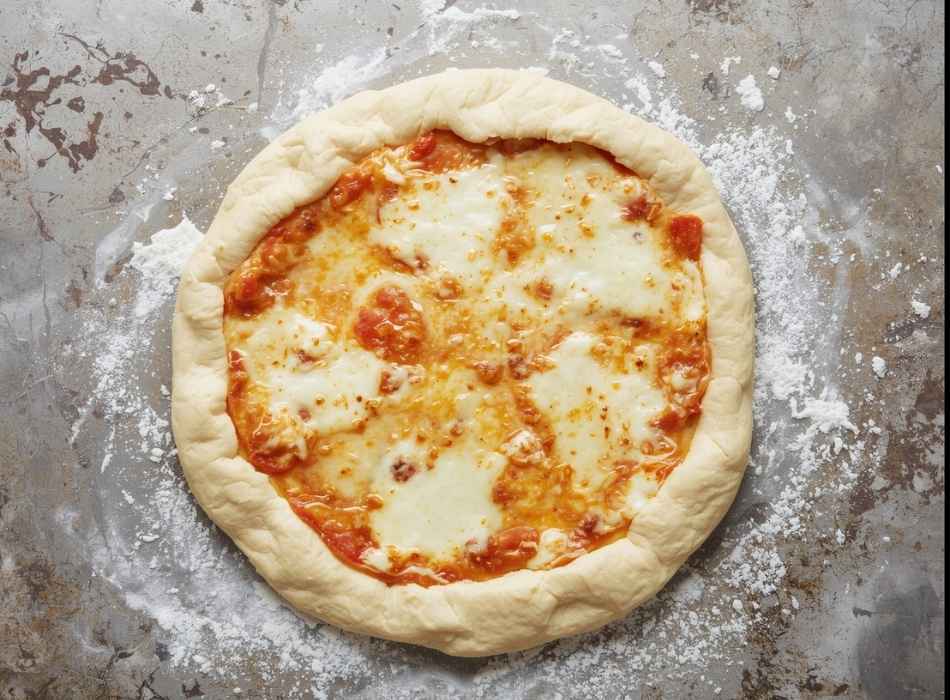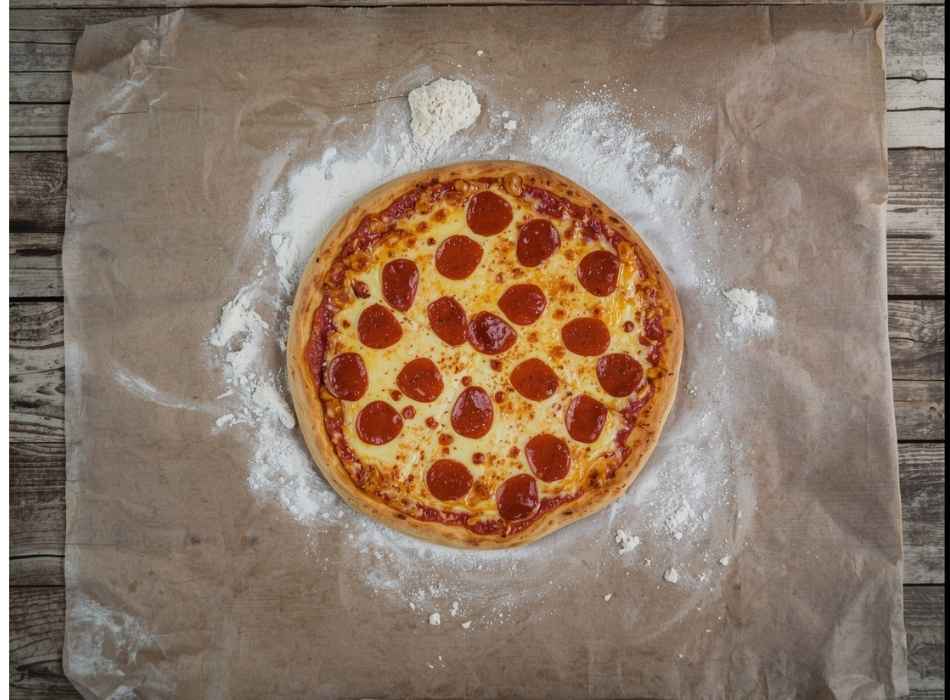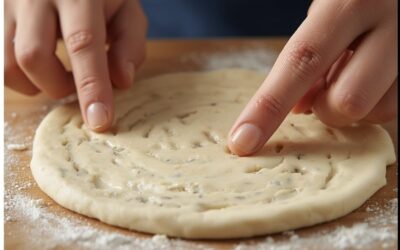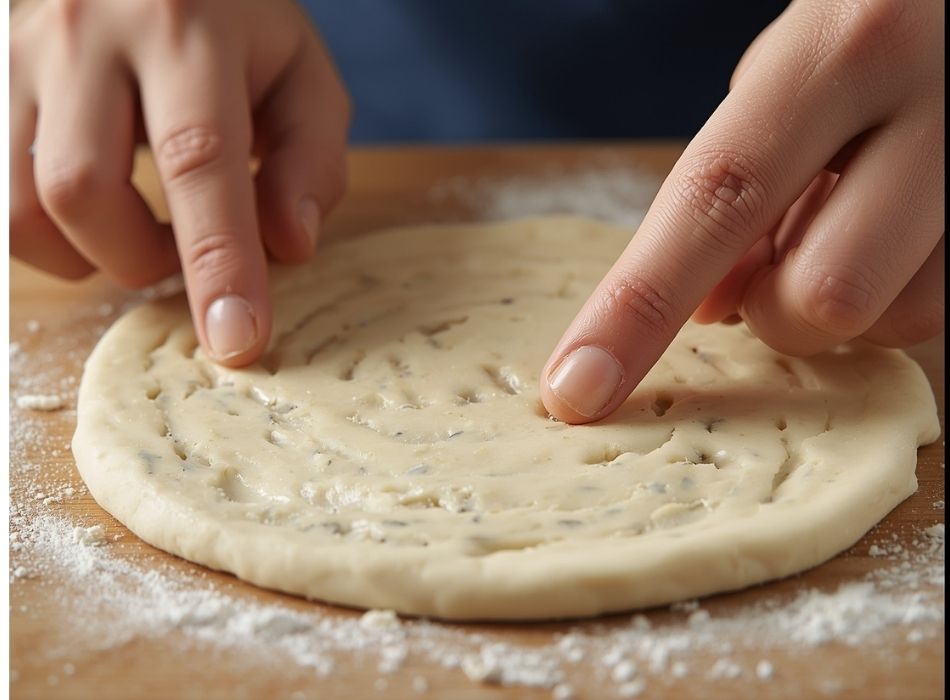You’re making homemade pizza and notice a small piece of raw dough stuck to your finger. Without thinking, you pop it in your mouth. Sound familiar? Or maybe you’ve deliberately snacked on cookie dough before and wondered if pizza dough is just as safe to eat uncooked.
The short answer is no—you shouldn’t eat raw pizza dough. While it might seem harmless, raw pizza dough contains ingredients that can pose serious health risks when consumed uncooked. Raw flour and eggs (if your recipe includes them) can harbor dangerous bacteria that cause foodborne illness.
This post will explain precisely why eating raw pizza dough is risky, what specific dangers lurk in uncooked dough, and what you should do if you’ve already eaten some. We’ll also cover safer alternatives for satisfying that dough-craving urge.
Why Raw Pizza Dough Is Dangerous

Raw pizza dough contains two main ingredients that make it unsafe to eat: uncooked flour and sometimes raw eggs. Both of these components can contain harmful bacteria that cooking typically eliminates.
The Hidden Dangers in Raw Flour
Most people assume flour is safe because it looks clean and processed. However, flour is a raw agricultural product that hasn’t been treated to kill bacteria. Wheat grows in fields where it’s exposed to animal waste, contaminated water, and other sources of harmful microorganisms.
The most concerning bacteria found in raw flour is E. coli, particularly the strain E. coli O121. This pathogen can cause severe symptoms, including:
- Severe stomach cramps
- Bloody diarrhea
- Vomiting
- Fever
- Kidney failure (in severe cases)
Between 2009 and 2019, the CDC documented multiple outbreaks of E. coli infections linked to raw flour consumption. These outbreaks affected dozens of people across various states, with some requiring hospitalization.
Salmonella is another bacterium commonly found in raw flour. This pathogen causes similar symptoms to E. coli, including nausea, fever, and severe digestive distress that can last several days.
Raw Eggs Add Another Layer of Risk
If your pizza dough recipe includes eggs, you’re facing additional risks from consuming raw eggs. Eggs can contain Salmonella bacteria, particularly on the shell and sometimes inside the egg itself.
Salmonella from eggs causes salmonellosis, which leads to:
- Diarrhea
- Fever
- Abdominal cramps
- Headache
- Nausea and vomiting
Symptoms typically appear 6 to 72 hours after consumption and can last 4 to 7 days. While most healthy adults recover without treatment, young children, elderly adults, and people with compromised immune systems face higher risks of severe complications.
What Happens When You Cook Pizza Dough

Cooking pizza dough at proper temperatures eliminates the harmful bacteria that make raw dough dangerous. When pizza dough is baked at temperatures between 450°F and 500°F (typical pizza oven temperatures), the heat kills E. coli, Salmonella, and other potential pathogens.
The internal temperature of properly cooked pizza dough should reach at least 165°F to ensure all harmful microorganisms are destroyed. This is why cooked pizza is safe to eat, even though the same dough would be dangerous when raw.
The cooking process also breaks down proteins and starches in ways that make the dough more digestible. Raw flour is difficult for your digestive system to process and can cause stomach discomfort even without bacterial contamination.
High-Risk Groups Should Be Extra Cautious

While eating raw pizza dough is risky for everyone, certain groups face higher dangers and should be especially careful:
Young children have developing immune systems that are less effective at fighting off foodborne pathogens than those of healthy adults. Even small amounts of contaminated raw dough can cause severe illness in kids under 5.
Pregnant women face risks both to themselves and their unborn babies. Foodborne illnesses during pregnancy can lead to complications, including premature labor, miscarriage, or serious illness in newborns.
Adults over 65 have weakened immune systems that make them more susceptible to severe symptoms from foodborne pathogens. Recovery times are also typically longer for older adults.
People with compromised immune systems, including those with chronic illnesses, cancer patients undergoing treatment, or individuals taking immunosuppressive medications, face the highest risks from raw dough consumption.
What to Do If You’ve Eaten Raw Pizza Dough

If you’ve already consumed raw pizza dough, don’t panic. Not all raw flour contains harmful bacteria, and even contaminated flour doesn’t guarantee you’ll get sick. However, you should monitor yourself for symptoms and take appropriate precautions.
Watch for symptoms of foodborne illness over the next few days, including stomach cramps, diarrhea, vomiting, fever, or nausea. Symptoms typically appear within 1 to 3 days after consuming contaminated food, though they can sometimes take up to a week to develop.
Stay hydrated by drinking plenty of water, especially if you develop digestive symptoms. Dehydration is one of the main complications of foodborne illness.
Contact a healthcare provider if you experience severe symptoms such as:
- High fever (over 101.3°F)
- Signs of dehydration
- Bloody diarrhea
- Persistent vomiting that prevents keeping fluids down
- Severe abdominal pain
Seek immediate medical attention if you develop signs of kidney problems, including decreased urination, swelling, or confusion, as these could indicate a severe E. coli complication.
Safer Alternatives for Dough Cravings

If you love the taste and texture of raw dough, there are safer alternatives that can satisfy your cravings without the health risks.
Edible cookie dough made specifically for raw consumption uses heat-treated flour and pasteurized eggs (or no eggs at all). Many brands now sell ready-made edible cookie dough, or you can make your own using treated flour.
Heat-treated flour is regular flour that’s been baked at 350°F for 5 minutes to kill potential bacteria. You can treat flour at home and use it to make safe raw dough for snacking.
Eggless dough recipes eliminate one source of contamination, though you’d still need to use heat-treated flour to make them entirely safe for raw consumption.
Store-bought alternatives include products specifically designed to be eaten raw, such as edible brownie batter or cookie dough varieties found in the refrigerated dessert section.
Keep Your Kitchen Safe

Prevention is always better than treatment when it comes to foodborne illness. Follow these guidelines to minimize risks when working with pizza dough:
Always wash your hands thoroughly before and after handling raw dough. Use soap and warm water for at least 20 seconds.
Clean all surfaces, utensils, and equipment that come into contact with raw dough using hot, soapy water.
Don’t let raw dough sit at room temperature for extended periods, as this allows bacteria to multiply.
Store unused dough in the refrigerator and use it within the timeframe specified by your recipe.
The Bottom Line on Raw Pizza Dough
Raw pizza dough poses real health risks that aren’t worth taking. The combination of raw flour and potentially raw eggs creates multiple opportunities for harmful bacteria to cause serious illness. While the chances of getting sick from a small taste might be relatively low, the potential consequences are severe enough to warrant caution.
Stick to enjoying your pizza dough after it’s been properly cooked, or explore the growing selection of products specifically designed for safe raw consumption. Your taste buds might be disappointed in the moment, but your digestive system will thank you later.
When it comes to food safety, it’s always better to err on the side of caution. Save the dough tasting for after the oven has worked its bacteria-killing magic.



















